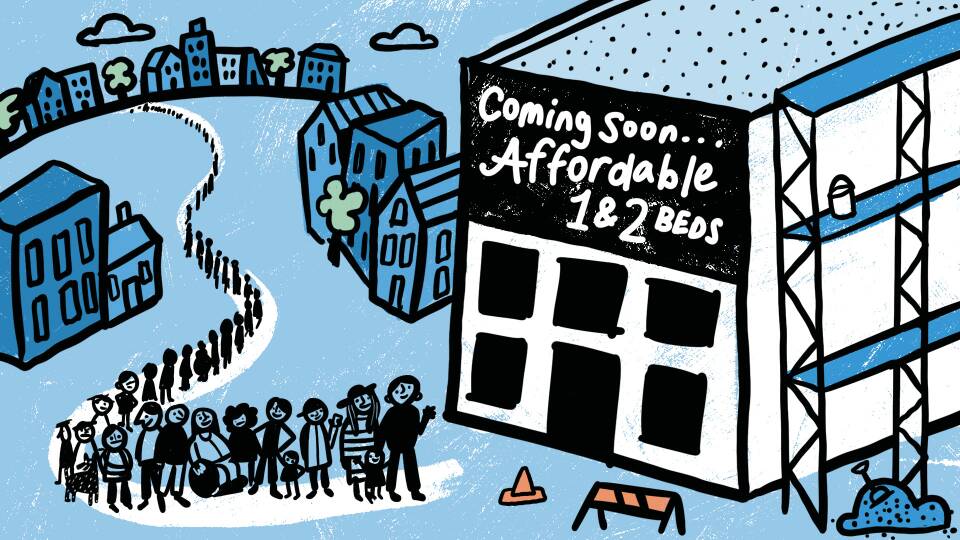A new tally shows the homeless population in Worcester County jumped nearly 20% over the last year, the fourth consecutive year it’s risen.
The most recent count of homeless residents across Worcester County identified a record-high 3,110 people, about 500 people more than last year. The total included nearly 1,300 children, almost 100 veterans and about 500 people who are chronically disabled.
Leah Bradley, CEO of the nonprofit Central Massachusetts Housing Alliance, said the numbers are likely significant undercounts because they don’t include people living in their cars or staying with friends or relatives. She blamed the rise in homelessness on a familiar culprit: the state’s affordable housing shortage. Advocates added a lack of supportive resources, like social services, shelters and temporary housing, isn’t helping.
“We’re going to continue to see [homelessness go up] until we start to think about: How do we increase the supply of housing?” Bradley said.
The Central Massachusetts Housing Alliance released the new data Wednesday. The count took place in January as part of the U.S. Department of Housing and Urban Development’s annual nationwide point-in-time survey.
Bradley noted that, according to Zillow, typical asking rents in Worcester County are about $2,200, double what they were a decade ago. And while a healthy rental vacancy rate is over 5%, she said the rate is hovering below 3% around Worcester.
The annual survey found that Worcester and Fitchburg — the county’s two largest cities — continue to be where the vast majority of unhoused people live. But homelessness numbers went up in smaller communities like Sturbridge and Spencer.
People are also spending more time homeless. In 2024, the average length of time for a period of being unhoused was about seven months — 213 days — compared to under six months a year earlier.
Bradley said that’s especially concerning because the longer people don’t have a consistent place to stay, the more likely their social, emotional and physical health will suffer.
“We’ve had a lot of folks that had not had treatment for cancer,” she said. “A lot of females don’t get prenatal care, which has resulted in infants not surviving after they’re born.”
Housing advocates in Worcester said they were upset to hear the numbers go up yet again, but added they’re not surprised.
Michael Earielo, the program director at Everyday Miracles, said he’s witnessed more people come into their community center in Worcester seeking assistance. He said people recovering from substance abuse may eventually land a spot in a recovery home, but they can only stay there for so long.
“What are they supposed to do after that? They’re stuck out here. They don’t got no money. They don’t have no plan,” he said.
Earielo said Worcester continues to suffer from a shortage of shelter beds. As a result, people have no choice but to sleep in encampments or on sidewalks.
Worcester city leaders have said they’re working on opening more shelters, strengthening case management for unhoused people and improving pathways to stable housing. In April, the Worcester City Council asked City Manager Eric Batista to put together an emergency plan to help address homelessness. That plan has not been revealed publicly.
Despite the rise in homelessness, Bradley said new state policies, such as a law allowing people to seal evictions, could help them secure housing. Other changes include connecting people with temporary housing to reduce their reliance on shelters.
However, in order to address the bigger problem — the affordable housing shortage — Bradley said communities must loosen their zoning laws and building restrictions. That includes allowing for more prefabricated housing and tiny homes as well requiring that new housing developments have fewer parking spots.
“The restrictions on what you can build and where you can build it makes it really hard to build housing,” she said. “We need to make the process easier.”








